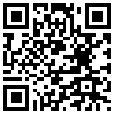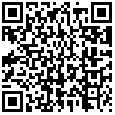Mga Detalye
I-download Docx
Magbasa pa ng Iba
Today, we are pleased to present selections from the Prasña Upanishad from the book “The Upanishads” translated by Max Müller. Prasña Upanishad Third Question “Then Kausalya Âsvalâyana asked: ‘Sir, from where is that Prâna (spirit) [life force] born? How does it come into this body? And how does it abide after it has divided itself? How does it go out? How does it support what is without, and how what is within?’ He replied: ‘[…] This Prâna (spirit) [life force] is born of the Self. Like the shadow thrown on a man, this (the prana [… life force]) is spread out over it (the Brahman). By the work of the mind does it come into this body. As a king commands officials, saying to them: Rule these villages or those, so does that Prâna (spirit) dispose the other prânas, each for their separate work. The Apâna (the down-breathing) in the organs of excretion and generation; the Prâna himself dwells in eye and ear, passing through mouth and nose. In the middle is the Samâna (the on-breathing); it carries what has been sacrificed as food equally (over the body), and the seven lights proceed from it. The Self is in the heart. There are 101 arteries, and in each of them, there are a hundred (smaller veins); for each of these branches, there are 72,000. In these, the Vyâna (the back-breathing) moves. Through one of them, the Udâna (the out-breathing) leads (us) upwards to the good world by good work, to the bad world by bad work, to the world of men by both. The Sun rises as the external Prâna, for it assists the Prâna in the eye. The Deity that exists in the Earth is there in support of man's Apâna (down-breathing). The ether between (Sun and Earth) is the Samâna (on-breathing), the air is Vyâna (back-breathing). Light is the Udâna (out-breathing), and therefore, he whose light has gone out comes to a new birth with his senses absorbed in the mind. Whatever his thought (at the time of death) with that, he goes back to Prâna, and the Prâna, united with Light, together with the self (the gîvâtmâ), leads on to the world, as deserved. He who, thus knowing, knows Prâna, his offspring, does not perish, and he becomes immortal. Thus says the Sloka: He who has known the origin, the entry, the place, the fivefold distribution, and the internal state of the Prâna, obtains immortality, yes, obtains immortality.’”














